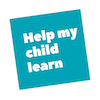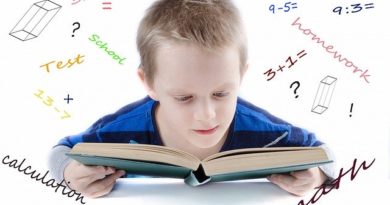Here’s Our Collection of Learning Disability Checklists
Learning disability checklists can help if your child is obviously having trouble, but you don’t have enough training or awareness to see the details of what might be going on. They help with one of the biggest questions that first-time LD parents have: How are you supposed to know what type of doctor or therapist to send your child to when you have no idea what’s happening?
It’s all right if you don’t know. It’s not your job.
(But yes, you’ll have to come up to speed fast.)
Learning disability checklists can help you identify what is difficult for your child to do. That’s an important first step.
Here’s how to use this page:
- Start with 14 Questions that tell you if your child might have a learning disability. If the answer is yes, then
- Go through the Big Checklist post to get an idea of the areas that your child might be having trouble.
- At the same time, read about how to test the Whole Child.
After those steps, come to this page and use these learning disability checklists to give you more information about various types of learning challenges.
READ learning disability checklists to learn more about specific learning differences and disabilities.
USE checklists and quizzes to learn what type of professional to take your child to.
LEARN from these checklists, so you can better communicate with teachers & school.
DON’T just use these instead of seeing a professional!
Remember: learning disabilities can often result from many different learning weaknesses (for example symbol recognition, auditory processing, fine motor skills, visual processing). These weaknesses can layer up, and are affected by maturity, so that it can be difficult to understand exactly what causes problems.
Remember also that it’s impossible to “flip a switch” and just fix any type of learning difference. Look for issues that are causing your child the most discomfort and problems, and help them to develop skills and abilities.
Sensory Processing Disorder or Immature Sensory System
Sensory processing problems include problems standing, sitting, hearing, seeing, balance, body sense, and motor skills. Your child might be bothered by sound, visual input, or by clothing, or by ordinary activities, such as bathing and hair-combing.
Children’s sensory systems should reach a level of maturity before starting school. A child with an immature sensory system may have problems with emotional regulation, difficulty focusing, and trouble performing academic skills. Sensory processing disorder checklists can help you understand which of your child’s behavior challenges are tied to sensory development.
The Star institute is one of premier treatment centers for sensory processing disorder. Here is their page listing symptoms of SPD.
Here’s a sensory checklist from the Raising a Sensory Smart Child book.
The Sensory Processing Disorder Resource center has a good basic checklist.
One of the symptoms of sensory processing problems (and sometimes dyspraxia) is called tactile defensiveness, when a child is physically defensive against the world. This is a very good overview and checklist.
And here’s a quiz for teachers, to help them determine if their students have SPD.
Dyslexia (reading)
Dyslexia is a language-based learning disability. It occurs when people have trouble matching letters they see on the page with sounds those letters make. This challenge makes reading, writing, and comprehension difficult. We’ve included some checklists that talk about different aspects of dyslexia.
Reading Rockets has a downloadable checklist of dyslexia symptoms.
The Victoria Independent School District has a dyslexia handbook for its teachers that does a good job of summarizing ways to identify dyslexics in the classroom.
This national resource in Ireland has several different summaries of what dyslexia looks like for different ages.
Another good resource, also from Ireland, is this list of Indicators of Dyslexia at different levels, from the Dyslexia association of Ireland.
The Dyslexia Research Institute lists characteristics of Dyslexia/ADHD on this page.
Reading Horizons (a for-profit company) has a free dyslexia screener that tells you if your child should be tested.
Lexercise (a for-profit company) has a free dyslexia screening test that’s been taken by over 38,000 parents, according to their website.
Dysgraphia (handwriting)
Dysgraphia affects written expression. It can appear as difficulties with spelling, poor handwriting and trouble putting thoughts on paper. Dysgraphia can be a language based, and/or a non-language based disorder.
The ADDitude magazine (a for-profit company) has a list of dysgraphia symptoms from preschool through high school.
Dianne Croft, educational specialist, has a short checklist, and also talks about checking your child’s dominant eye, to see if your child (for example), is right-handed, but left-eye dominant. She feels that this can affect handwriting.
Dyscalculia (math)
Dyscalculia is a math learning disability that impairs an individual’s ability to represent and process numerical magnitude in a typical way. Common symptoms of dyscalculia include difficulty with number sense, fact and calculation, and mathematical reasoning.
Here’s a list of the signs of dyscalculia from the Dyslexia Association.
Understood has a list of dyscalculia symptoms from preschool to high school.
ADHD
ADHD stands for attention deficit hyperactivity disorder. Experts say that behaviors categorized as ADHD can be caused by several different conditions, so we suggest looking at the Whole Child Diagnosing post in addition to these checklists.
There are three types of ADHD:
- Hyperactive/impulsive,
- Inattentive (also called ADD), and
- Combined inattentive and hyperactive/impulsive.
The ADD Resource Center lists criteria for ADHD.
The ADDittude magazine (a for-profit company) has four different quizzes to identify ADHD:
- ADHD
- Inattentive ADHD (also called ADD) symptoms
- Hyperactive and impulsive ADHD symptoms
- ADHD symptoms in girls (ADHD can look different in girls and boys.)
Memory problems
Memory problems can affect either long-term or short-term (also called working) memory. Children with working memory problems have trouble holding a question in their brain while turning a page or looking for answers. Sometimes they learn, then immediately forget. Memory problems make it hard to memorize and retain even the simplest information, such as months, days of the week, birthdays, telephone numbers, faces, and letters.
Most children with dyslexia have trouble memorizing unrelated information. Parents have learned to teach information with context, and to give their parents multiplication table memory aids.
Cogmed makes a working memory training program. Here’s their Working Memory Checklist
The ADDitude magazine (a for-profit company) has a working memory self-test.
Another checklist for working memory symptoms, from Gemm Learning, and includes a description of working memory by age.
Here’s a list of working memory problems, (and techniques for dealing with them,) from the LA@School website.
Auditory Processing problems
Auditory processing problems indicate that a child’s brain has trouble translating auditory input into usable information. If a child has auditory processing problems, it can also mean that mis-translated input gets stored in the wrong place, and the child cannot remember where.
The American Speech Language Hearing Association (ASHA) has a list of APD symptoms here.
Auditory processing disorder checklist
List of behaviors associated with auditory processing disorder.
Processing problems
Children can have processing problems with visual, auditory, language, memory processing. Processing problems can affect a child’s ability to accept input into the brain, understand it, act upon it, or produce output. They can affect reasoning, making it hard to multi-task, and causing the child to respond and work slowly. If a child has multiple types of processing problems, it can be difficult to use input to solve a problem and write it down, for example. Many children have slower processing. These children need to learn to take the time that they need and advocate for themselves.
Understood website has a list of slow processing speed symptoms
Visual perceptual processing disorder checklist
The OT Mom website describes symptoms of visual processing disorder.
Children with language processing disorders often have problems following directions or understanding stories. Checklist for language processing disorder.
Executive Function
Executive Function can affect organization, setting up goals, and getting things done. Includes trouble organizing thought and action and solving problems. Problems starting and finishing tasks.
The National Center for Learning Disabilities has a downloadable book about executive function that includes a checklist.
Peg Dawson and Richard Guare are the authors of Smart but Scattered, and several other books with specific, usable information about parenting and teaching children with executive function disorder. Here is an executive function checklist from their work, available at the New York State PTA website.
As Amazon Affiliates, we make a small fee if you purchase from an Amazon link on our website.
Additude magazine (a for-profit company) has a downloadable executive skills checklist.
Social Skills
Up to 75% of students with LD have a hard time intuitively understanding the rules around social skills Their problems include understanding how to connect with others, poor communication skills, and defensiveness.
Learning disabilities themselves can affect social skills. For example, problems hearing or understanding input can make it harder to talk with friends. And problems with sensory development can make it difficult to sit with other people.
Social skills checklists are really only of limited help, since there are so many variables that affect socializing. These checklists are only to give you a general idea of expected behavior.
Here’s another social skills checklist for pre-K and elementary school.
The Year for Change blog contains a Social Skills checklist
The University of Washington has a different type of social skills checklist.
Nonverbal Learning Disability (NVLD)
Children with nonverbal learning disorder are very verbal but may have problems with social skills, maps and direction, or sensory issues. A nonverbal learning disorder is classified as being on the autism spectrum, although the child may only have problems that become obvious as they get older.
Nonverbal Learning Disability checklist
NVLD can be confused with ADHD. ADDitude magazine (a for-profit company) has a checklist for NVLD.
Anxiety and Mental Health
Many children with learning differences are affected by crushing levels of anxiety, and even young children can experience mental health issues. It’s important to keep watch on your child’s mental health, and teach good mental health skills.
Anxiety
The Child Mind Institute has an anxiety symptom checker here. It doesn’t diagnose, but it can help you determine whether you should take your child to a medical professional. Also, they give you observations and information.
We also like the Spence Children’s Anxiety Scale, by Dr. Susan Spence. There is a parent version of this checklist available on her website, here. Please download the scoring information and make sure you follow it, as this checklist can be very effective if used correctly. Dr. Spence is co-author to the book: Helping Your Anxious Child: a Step-by-Step Guide for Parents.
As Amazon Associates, we earn a small commission if you purchase from this link.
The Anxiety and Depression Association of America has an online screening for childhood anxiety disorder.
And ADDitude Magazine (a for-profit business) has a checklist for generalized childhood anxiety disorder.
Depression
Erika’s Lighthouse is a website for adolescent depression. Here’s their youth mental health checklist for ages 16 and up.
The Beyond Blue website has a child mental health checklist for children aged 4 to 16. You or your child can fill out the checklist here. Here’s their youth mental health checklist for ages 16 and up at their Youth Beyond Blue mental health website.
Perfectionism
It turns out that perfectionism in children can lead to mental health problems as the child matures. For this reason, it’s important to watch out for perfectionist tendencies and teach your child early mental health balancing and coping skills. This article contains a checklist for perfectionism.
The One in Five Minds mental health blog has an article that contains 7 screening tools for children’s mental health concerns.
Just Being Different
This is just a reminder that some children are slow to mature, have brain areas that mature at different speeds, or have brains that just work differently. This can include very gifted children, who often develop in individual fashions. For any brain quirks, remember that there’s a significant question: Does it get in the way of this child’s learning? Many parents have chosen to homeschool their unique children so that they can customize their child’s learning environment to their child’s needs and abilities. There are many ways to learn.






Pingback: Whole Child Diagnosis – Help My Child Learn
Pingback: What do You Test for a Learning Disability? #BigChecklist - Help My Child Learn
Pingback: Weighted and Compression Clothing Can Calm Your Child - Help My Child Learn